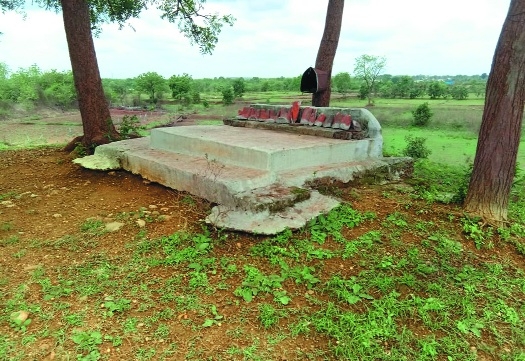ASI starts acquisition work of two ancient mounds in Pauni
| Date :20-Jun-2021 |

By Shirish Borkar :
THE Nagpur Circle of Archaeological Survey of India (ASI) has started the process of acquiring two ancient mounds of national importance at Pauni in Bhandara District. The work for acquisition of ‘Hardulala-ki-Tekdi’ and the mound on which modern temple of Jagannath stands was being executed as per the provisions of the Ancient Monuments and Archaeological Sites and Remains (AMASR) Act. These two mounds and remains of the circumambulation wall of the ancient Pauni Fort were already declared as national heritage monuments by the Government of India. Simultaneously, ASI experts would restart the conservation work of the wall of the fort with government easing COVID curbs. Popularly known as ‘Kashi of Vidarbha’ due to its wide swath of temples and other monuments, Pauni was an ancient town engirdled by on three sides. In the northern side flows Vainganga river.

Hardulala-ki-Tekdi is capped by a stone-built platform. It enshrines fragmentary legged querns. People now worship them as mother goddess as they resemble protruding breasts of a female.
The rampart of Pauni Fort had undergone a number of renovations and was retained from time to time. Cutting across the southern rampart, ASI in 1993-94 revealed five constructional periods of the rampart from Pre-Mauryan, Sunga, Satvahana and Vakataka. A copper plate discovered within the rampart records the grant of Pravarsena II of Vakataka dynasty who ruled over this region. The medieval fortification is present on the west side and its south-west corner. Surmounted by five bastions, the wall was raised with small ‘Chhattris’ in pairs. Remains of a large arched gateway are still visible at the northern end. The upper part of the fort was built of bricks and lower with stones. The fort which was constructed in the early 18th century by Gond ruler Bakht Buland was taken over by Raghuji Bhosale-I around 1710 AD.
The fort was attacked by the British in a campaign against Mudhoji (II) Bhonsle alias Appa Saheb in 1818. Extensive excavations by archaeologists in Pauni had revealed the discovery of an ancient stupa complex. The Buddhist stupa seems to have remained in worship from the beginning of 3rd century BC to 3rd century AD. The ancient mounds in Pauni were excavated by the Department of Ancient Indian History, Culture & Archaeology, RTM Nagpur University in collaboration with the ASI in 1968-69. One of the two mounds being acquired by the ASI, is known as Jagannath Tekdi. Situated atop the mound, is the temple of Lord Jagannath which was constructed in the recent past. These excavations revealed remains of a Buddhist stupa right over the laterite deposit with burnt bricks with 41.2 metre diameter. It had a 1.6 metre wide ‘Pradakshina-path’ (ambulatory path).
The railings were artistically sculptured with figurines of Yaksha, Naga Muchalinda, devotees and motifs of Chaitya-vrksa, Dharmachakra. It was provided with a ‘Harmika’ and ‘Chhatravali.’ The railings had four gateways similar to those at Sanchi and Bharhut. The monument seems to have been degenerated in the Satvahana-Kshatrapa period. Another mound ‘Hardulala-ki-Tekdi’ with a basal diameter of 30 metres.The excavation yielded sandstone square pillars, pottery, miniature vase, trough handled cup storage jars and several other antiquities. An ASI official said, “The process of acquisition of the two mounds is on as per AMASR Act as they are situated on private land.” As per the law, the owners of the sites would be compensated after entering into an agreement with them, he added. “Similarly, the conservation work of the fort wall will restart on scientific lines shortly,” the official said.
